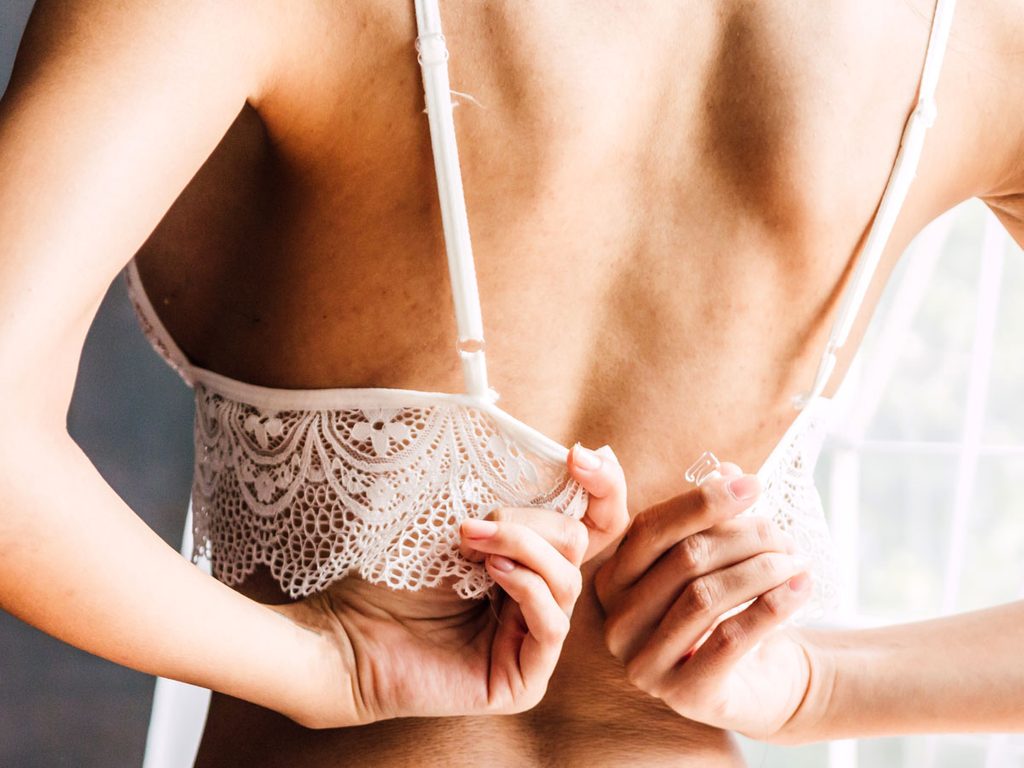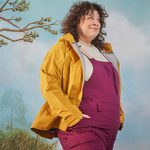What Happens When You Stop Wearing a Bra

Going braless is a personal choice. Here are the pros and cons, according to experts.
It’s helpful to know a little about your breasts and what they’re made of so you can understand the role your bra plays. “Breasts are composed of glandular tissue and fat. The breast gland itself is supported by Cooper’s ligaments — an internal matrix of connective tissue,” explains Alexis Parcells, a board-certified plastic surgeon at Parcells Plastic Surgery in Shrewsbury, New Jersey. Their shape and the way your breasts sit depend on their unique ratio of glandular tissue and fat.
The decision of going braless is a personal one. You don’t have to worry that you’re hurting your breasts or increasing your risk for certain diseases. But, there are specific times when skipping a bra may lead to damage — and when it might be best. Here’s what you need to know about going braless.
You may experience neck pain
It depends on your cup size, but if you have very large breasts, “not wearing a bra could affect back or neck pain,” says Constance M. Chen, a board-certified plastic surgeon and breast reconstruction specialist in New York City. In fact, a study published in The Journal of Orthopaedics found a correlation between a large cup size and shoulder and neck pain, as the heaviness of breasts continually pull on the trapezius muscle which runs from the back of the neck to the shoulders and down the upper back. On the other hand, a good, well-fitting bra should help support the weight of the breasts, offloading the work your body has to do.
Your posture may improve
There’s a reason that some people call bras “breast prisons.” A bad bra can cause breast soreness (and the majority of bra wearers are wearing the wrong size, too). And so, ridding yourself of a bad bra may actually deliver some benefits. “An improperly fitted bra can exacerbate muscle tension, stiffness, and affect the flow of air through the rib cage,” says Dr. Parcells. In turn, your posture and balance may be off, she says.
But, you don’t have to ditch one completely, especially because a good bra will alleviate strain on these muscles. Just make a switch. “When you wear a well-fitted bra, you should feel lighter and almost forget you’re wearing one,” says Dr. Parcells.
(Related: 5 Yoga Moves for Your Best-Ever Posture)
You may get rid of “shoulder grooves”
If you have small breasts, it may seem unnecessary to strap something to your chest. If you have large breasts, “the heaviness of the breasts can cause bra straps to dip into the shoulders and result in grooving, which can also add to neck and back pain,” says Dr. Chen. What’s more, skipping a bra for short intervals may improve circulation between the back and breasts and relieve skin irritation, adds Dr. Parcells. Consider doing this at night.
Your breasts may be more prone to sagging
Bras hold the breasts up. “A good bra can help support the breasts, offloading the Cooper’s ligaments in the breasts,” says Dr. Chen. Ultimately, this may reduce some stretching and sagging. That said, there’s far more that plays into sagging than bras. For one, a study in the Annals of Plastic Surgery suggests that breast drooping is associated with age, higher body mass index (BMI), pregnancy, and smoking. (Interestingly, breastfeeding wasn’t a factor, the researchers found).
Your risk of breast cancer decreases
That’s simply not true. In a 2015 study on premenopausal women in the journal Cancer Epidemiology, Biomarkers & Prevention, nothing about wearing a bra — including how big your breasts are, how long you wear a bra during the day, or wearing one an underwire bra — affects your breast cancer risk.
(Related: What Doctors Want You to Know About Breast Cancer)
Your workout may change
If you’re not wearing a sports bra when you work out, your breasts may “swing around like uncontrolled weights, which can be uncomfortable,” says Dr. Chen. It may also change the way you move. In a 2020 study in the Journal of Biomechanics, which analyzed how various sports bras and footwear changed spinal mechanics during running, researchers found that bare-breasted exercisers compensated for this swinging by changing the way they moved their upper body during exercise, which could contribute to spinal pain. Proper support with the right sports bra was important, they said, to maintain comfort.
Why you shouldn’t go braless during exercise
If you need another reason to get situated in a sports bra before you hop on your spin bike or go for a run, know that it will protect your breasts. No matter your size, “keeping breasts secure will help avoid micro-trauma to your breast tissue and tears to Cooper’s ligaments,” says Dr. Parcells. “This can lead to stretch marks and internal scarring if done routinely,” she adds.




